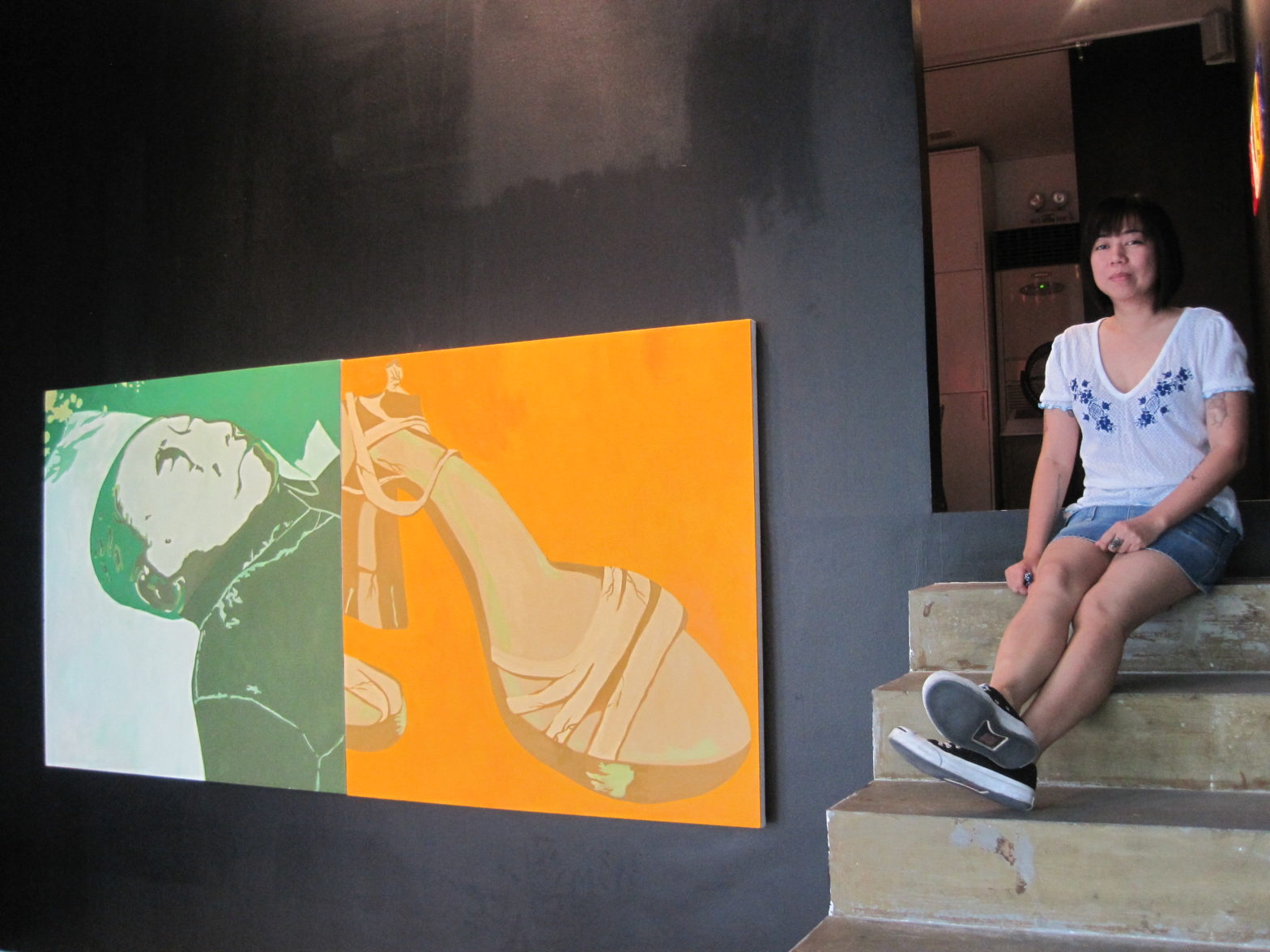Text and photos by ELIZABETH LOLARGA
IN death Marilyn Monroe, as portrayed by visual artist Tin F. Garcia, is the negation of the desirable Hollywood actress/sex goddess who once said she wanted “to grow old without facelifts, to have the courage to be loyal to the face I have made.”
The real story behind her “suicide” remains wrapped in mystery. Lifeless like a slab of meat on a butcher’s block, two-dimensional and rendered in duotones of gray and violet, Monroe is entirely without makeup, glamour and star wattage.
It may be Garcia’s outlook that death is the great equalizer or her defiant stance against the cult of celebrity that turns historical figures into pop icons (Monroe, John F. Kennedy, Mao Zedong and Imelda Marcos, the last represented by a high-heeled shoe).
Her second solo show, “Gravity Always Wins,” at Pablo Fort, unintentionally calls forth aspects of this penitential season of Lent, even her own Roman Catholic background that ingrained in convent girls the fundamental bedrock of their religion: salvation, death and resurrection.
The walls, painted black expressly for the show, turn the gallery into a setting for the macabre and the morbid. Garcia’s point is this: no matter how high the pinnacles of pelf and power a human can climb, eventually one is pulled down by gravity (decay and death). She half forces the viewer to deal with this inevitability.
She calls her collection of oil paintings, limited edition balloons and acrylic stencils of dead people/things as her “response to Andy Warhol’s works, which celebrate the cult of personality and mass-produced artifice.”
Her balloons, entitled “Fertilizer” (they’re stuck in pots with soil), make up her dialogue with Warhol’s “Silver Clouds.” The American artist once exhibited silver pillow-shaped balloons in a room, but they kept falling (an example of how gravity wins) and visitors kept inflating them.
Her petite balloons are presented like the lilies, daisies and other flowers arranged into wreaths and boughs and offered at wakes.
In her artist’s statement, Garcia reflects on these objects: “Stamped with the images of our dead stars, the balloons wage their own losing battle against gravity. Like low-hanging fruit, they document the saccharine nature of celebrity, and the eventual rotting of its conceits. Balloons are celebratory by design. By adorning them with images of the dead, do we celebrate death? Or is this an attempt to belittle death, to own it the same way Marilyn owned men’s hearts?”
She has no fixed answers. Instead, she puts her four feet by four feet oil portraits of Monroe and Kennedy side by side like a diptych. It’s an unintentional gesture showing that the death of these two presumed lovers is the stuff that keeps conspiracy theories alive. Kennedy is not the legendary king of Camelot that his widow tried to make him out to be. Here he is painted with the telling hole in the head left by an assassin’s bullet.
Garcia turned to the Net to look for rare morgue photos of celebrities. They are the kind of photos that have that Warholian spirit of what you see is what you get or no artifice to hide the truth of lifelessness.
With help from partner and fellow visual artist Iñigo de Paula, these photos were “Warholized” or tweaked through a Photoshop program until they were several times removed from the original sources.
She considered other dead icons like rap artist Tupac who was killed in a gang war. She finally focused on morgue photos of celebrities that met her sole criterion: death erasing the subjects’ health, glamour, beauty, sex. She conceded though that “death adds to the glamour.” Monroe’s death only made her mystique grow.
There is no political statement involved in including Mrs. Marcos’s shoe. Garcia just needed a fourth icon to complete the Oriental numeral for death. When she read a news item about how the infamous shoes were getting eaten by termites even if they were housed in a museum, she saw this as a “fallen symbol of glamour.”
Known for her detailed, hyper-realist paintings, Garcia has ventured into simplifying figures by means of reduction (taking away) in her “Headstones” series. She selected industrial acrylic cuts, the kind used for store signs. These cuts come in solid colors so Garcia asked a professional cutter to follow the printouts of her portraits by chipping away at the colors until the figures were arrived at.
It’s partly a tribute to Warhol again, he who merely presented finished products from his studio called The Factory. There is no documentation of the process or how his final products were made.
“Gravity Always Wins” is up at Pablo Fort until March 29. The gallery is at Unit C-11 of South of Market Condominium, Fort Global City in Taguig.
